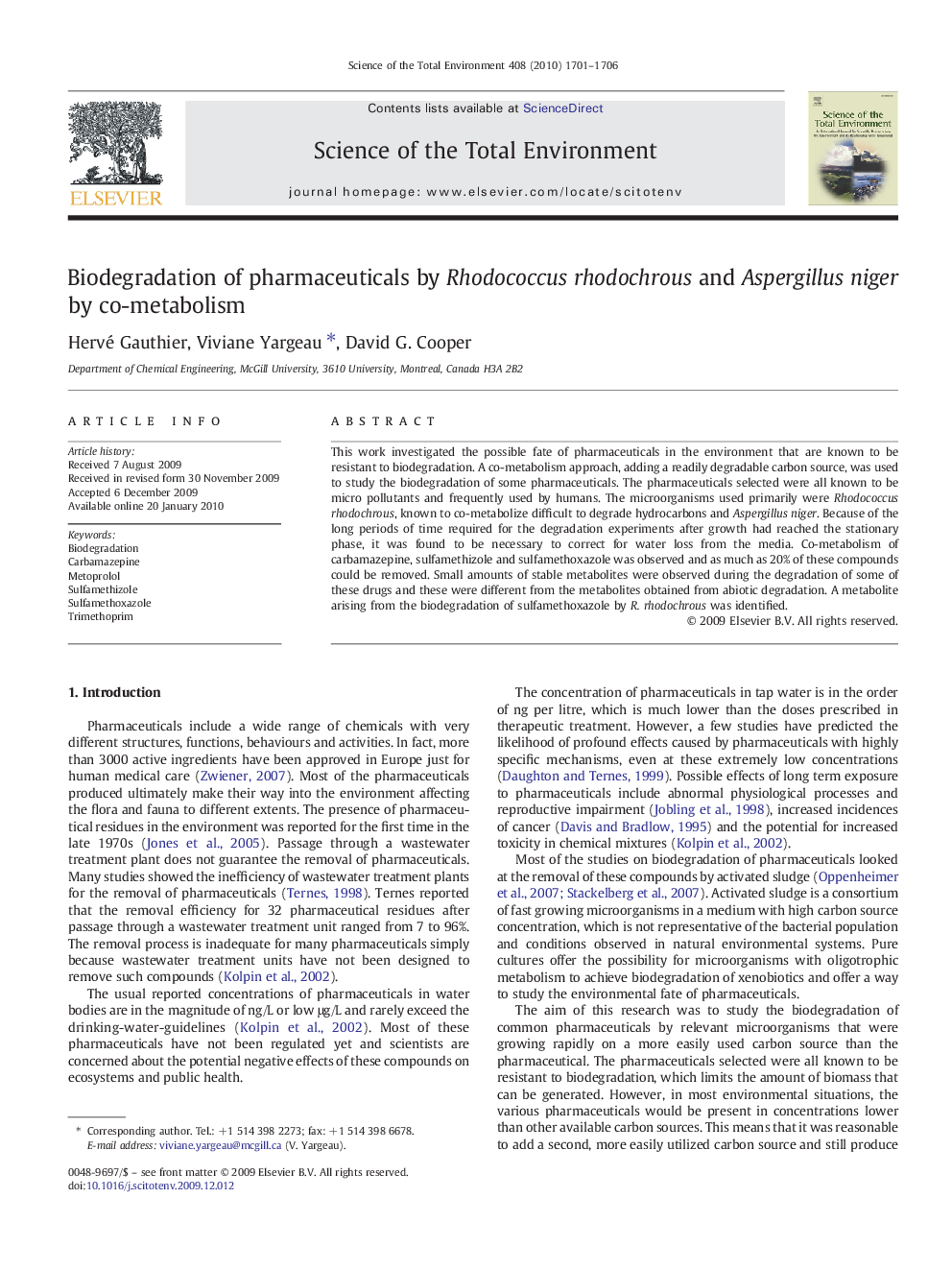| Article ID | Journal | Published Year | Pages | File Type |
|---|---|---|---|---|
| 4432076 | Science of The Total Environment | 2010 | 6 Pages |
This work investigated the possible fate of pharmaceuticals in the environment that are known to be resistant to biodegradation. A co-metabolism approach, adding a readily degradable carbon source, was used to study the biodegradation of some pharmaceuticals. The pharmaceuticals selected were all known to be micro pollutants and frequently used by humans. The microorganisms used primarily were Rhodococcus rhodochrous, known to co-metabolize difficult to degrade hydrocarbons and Aspergillus niger. Because of the long periods of time required for the degradation experiments after growth had reached the stationary phase, it was found to be necessary to correct for water loss from the media. Co-metabolism of carbamazepine, sulfamethizole and sulfamethoxazole was observed and as much as 20% of these compounds could be removed. Small amounts of stable metabolites were observed during the degradation of some of these drugs and these were different from the metabolites obtained from abiotic degradation. A metabolite arising from the biodegradation of sulfamethoxazole by R. rhodochrous was identified.
